An air conditioning system installation needs to be planned and carried out correctly. A properly fitted air conditioner guarantees lifetime and efficiency, whether for homes or workplaces. The whole AC installation process, including setup, planning, and ongoing maintenance, is covered in this tutorial.
Plan Before Installation
Before starting the installation of AC, planning is crucial. Choose the right air conditioner unit installation that suits your space. Take into account the requirements of space dimensions and insulation performance as well as cooling system output. Correct planning both maximizes operational performance and stops unnecessary energy losses.
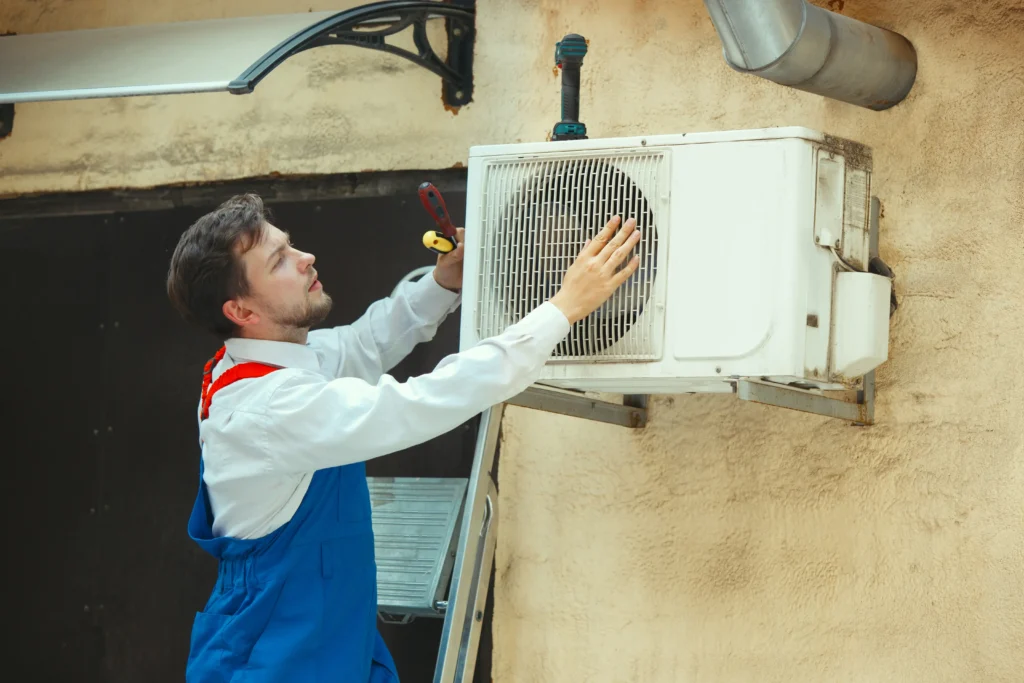
1. Selecting the Right Air Conditioner Unit
Selecting an appropriate air conditioner forms the base to ensure proper operation. You need to evaluate three essentials for air conditioner selection before purchase:
- Type of AC: Your requirements should determine which air conditioning system you need among window ACs, split ACs and central air conditioning.
- Cooling Capacity: Look for an AC with proper British Thermal Unit (BTU) rating because it will determine the equipment’s ability to provide proper cooling in your room space.
- Energy Efficiency: The search should include units featuring high SEER ratings since this will lead to lower electricity costs.
2. Evaluating Room Size and Layout
Air conditioner efficiency directly relates to room dimensions when determining its operation capability. Using an AC with inadequate capacity will struggle to keep the room comfortable, while an oversized system will operate often which creates additional energy expenses. Consider:
Room Dimensions:
The correct cooling capacity can be calculated through a measurement of room dimensions that includes length and width and height.
Windows and Doors:
An increase in the number of windows results in excessive heating and obliges the homeowner to buy a stronger cooling system.
Insulation Levels:
Well-insulated rooms retain cool air better, reducing the need for higher AC capacity.
3. Determining the Best Installation Location
Where an air conditioner unit gets installed directly affects the overall system performance. Considering the installation spot takes precedence along with the following steps:
For Split ACs:
A correct indoor unit height placement together with a spot out of direct sunlight ensures effective cooling.
For Window ACs:
The unit should have proper support with a secure fit to stop vibrations and noise from happening.
For outdoor units:
Locate these systems in a shaded ventilated zone because targeted thermal environments maximize their operating potential.
4. Ensure Proper Electrical Setup
An efficient operation of air conditioner units depends upon maintaining a reliable power source. Check:
Voltage and Amperage Requirements:
Check that your electrical system has enough capacity to support the AC’s power requirements.
Dedicated Circuit:
The installation of a different power source dedicated for the AC unit should replace overloaded existing circuits.
Surge Protection:
A voltage stabilizer or surge protector serves as protective devices to stop damage from power fluctuation.
5. Checking Ventilation and Drainage System
Proper ventilation is crucial for an AC to work efficiently. Make sure:
- Airflow is Unobstructed: Furniture or curtains should not block air vents.
- Drainage System is in Place: AC units produce condensation that needs to be drained effectively to prevent water damage.
6. Hiring a Professional vs. DIY Installation
Some homeowners choose to self-install their air-conditioning system but professional installation provides correct positioning and ensures both safety measures as well as manufacturer guidelines adherence. A certified technician can:
- Properly secure the unit
- Ensure all electrical connections are safe
- Test the AC for efficient performance
7. Ductwork for Central Air Conditioners
Correct ducting is necessary for central air conditioning system installation. To find any leaks that need the proper sealing techniques, a duct investigation should be done. In addition to lowering system performance, improper duct placement raises utility costs.
8. Considerations for Refrigerant
The refrigerant substance’s correct operation is essential to the cooling process. The installed refrigerant needs to adhere to the manufacturer’s recommendations. Uncharged refrigerant will raise operating energy requirements and produce less energy-efficient cooling.
Prepare the Air-Con Installation Site
Before installing air conditioning, clear the area for smooth operation. Remove obstacles and ensure access to electrical connections and drainage outlets. A clean workspace speeds up the AC install process.
Major Phases of AC System Installation
Every air conditioning installation process follows specific steps. Below is a breakdown of major phases:
- Inspections and Measurements
Inspect the installation site. Measure the room size to determine the right installation AC capacity. Proper sizing prevents overworking the unit and extends its lifespan.
- Set Up the Indoor Unit
Mount the indoor unit securely on the wall. Ensure it is level to prevent water leaks. Proper placement enhances airflow and cooling efficiency.
- Set Up the Outdoor Unit
Place the outdoor unit on a stable surface. Secure it to prevent vibrations. A poorly mounted unit can lead to excessive noise and reduced efficiency.
- Attach Pipes and Wires
Fasten all drain pipes with electrical wires and refrigerant pipes before final installation. Every pipe connection needs to be tightly secured. . Any loose connections can lead to leaks or short circuits.
- Charge Vacuum and System
To get rid of air and moisture, vacuum the system. To avoid internal component damage, this procedure is essential. As directed, fill the system with the proper refrigeration.
- Test and Final Adjustment
Turn on the AC and check its performance. Test the cooling efficiency, thermostat settings, and airflow. Make final adjustments for optimal performance.
- electrical requirements for ac installation
A properly sized electrical circuit with adequate amperage (typically 15-30 amps) and correct voltage (usually 240V for central AC or 120V for window units) is essential for safe and efficient air conditioning installation.
Self-Installation of AC Units: Proceed with Caution
Home-based air conditioner installation projects appear cheap but expert installation guarantees security together with optimal functionality. Improper installation of air conditioner units will invalidate warranties and result in enduring operational problems.
Tips for Successful Installation
To ensure a smooth air conditioning installation, follow these tips:
- Select the Correct Size
An oversized unit wastes energy, while an undersized one struggles to cool the space. Use a BTU calculator to determine the right size.
- Follow the Manufacturer’s Guidelines
Every air conditioner fitting has specific instructions. Follow them carefully to ensure proper installation and functionality.
- Ensure Proper Insulation
Insulated refrigerant pipes improve efficiency and prevent condensation issues. Poor insulation leads to energy loss.
- Check Local Regulations
Before installing air conditioning, check local air conditioner rules and regulations. Compliance avoids legal issues and ensures safety standards.
Common Mistakes to Avoid During AC Installation
Many errors occur during aircon installation. Avoid these common mistakes:
- Incorrect Placement: Wrong indoor/outdoor unit placement affects performance.
- Improper Sealing: Unsealed ducts lead to energy loss.
- Ignoring Electrical Requirements: Incorrect voltage can damage the unit.
- Skipping Vacuuming: Leaving moisture in the system affects efficiency.
- Using Incorrect Refrigerant Levels: Too much or too little refrigerant reduces cooling capacity.
Long-Term Support and Maintenance
Regular maintenance extends the life of your air conditioning installed unit. Schedule professional servicing at least once a year. Clean filters monthly and check for refrigerant leaks to maintain efficiency.
FAQs About AC Installation
How long does an AC installation take?
Air conditioner unit installation needs 4-8 hours to complete which depends on both the system type and site conditions.
Can I install an AC myself?
Attempts to install an air conditioner on your own should be avoided since only professionals ensure both performance quality and safety.
The installation price of new air conditioners varies.
The total expense for new AC installation depends on the characteristics of the selected system alongside installation intricacy. It often falls between $3,000 and $7,000.
Do I need permits for AC installation?
Many areas require permits for HVAC AC installation. Check local air conditioner rules and regulations before proceeding.
How do I maintain my AC after installation?
Regular filter maintenance, annual professional checkups, and inspection of refrigerant levels will keep the air conditioner install optimal.
An air conditioner unit installation requires proper installation to operate efficiently while extending its lifespan. Following this guide enables you to choose wisely and prevents expensive installation mistakes. Professional assistance should be sought in all cases, including residential air conditioning installation and AC installation for the office, to achieve peak performance.
Your AC installed system will operate efficiently through numerous years with proper execution of these guidelines.
AC Maintenance UAE Team
Welcome to AC Maintenance UAE, your reliable partner for complete air conditioning repair and maintenance services in Dubai, Sharjah, and Abu Dhabi. We are strongly dedicated to excellence and deliver efficient and reliable services to keep your cooling systems performing at their best.

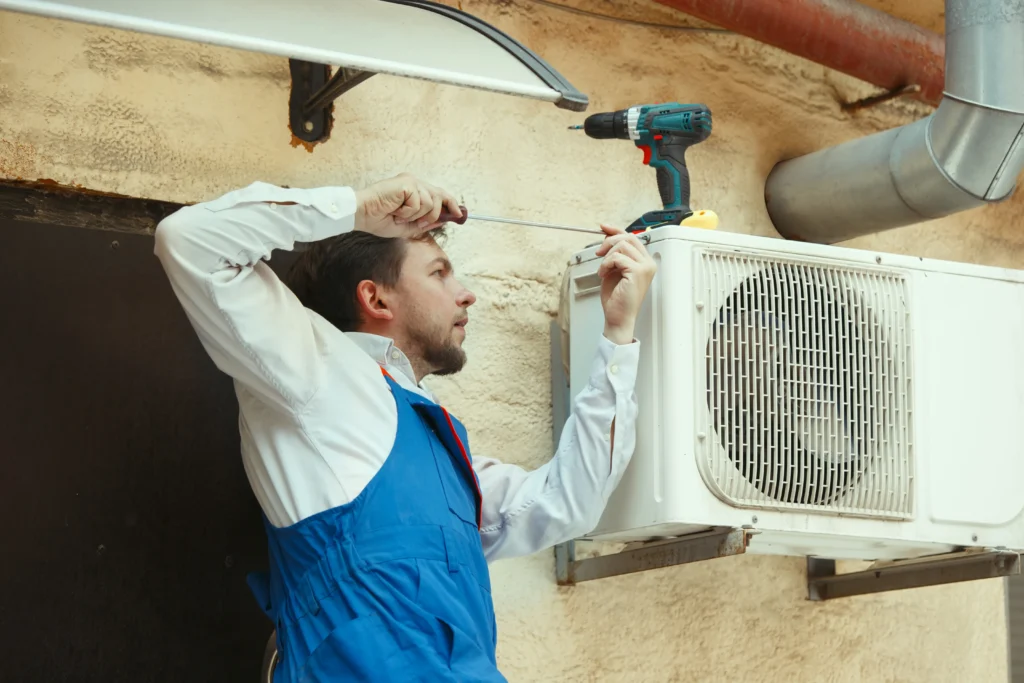
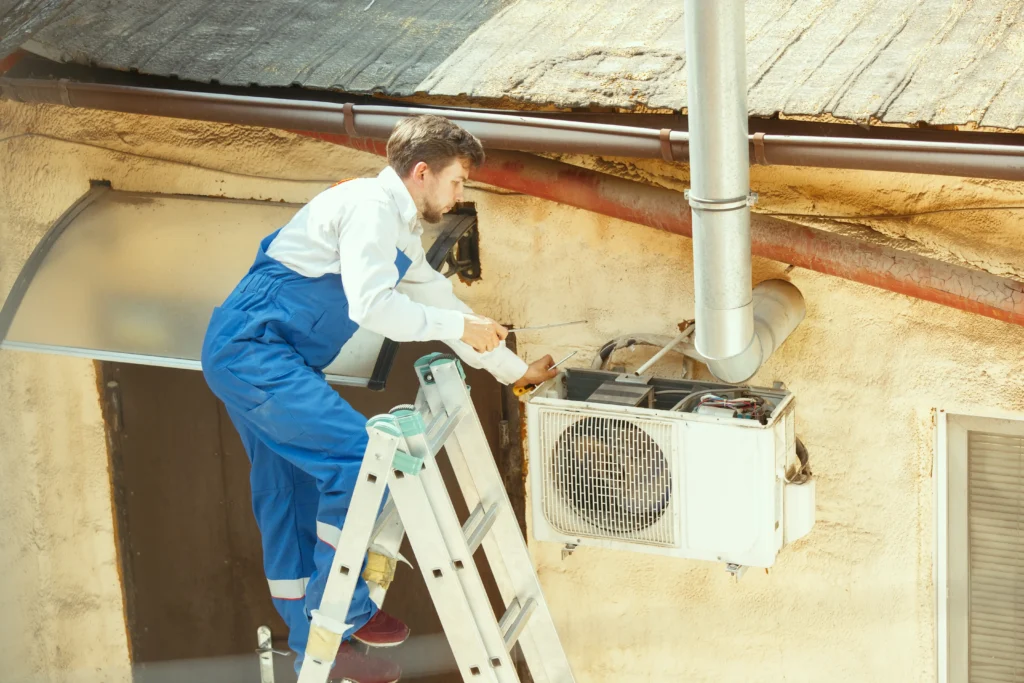
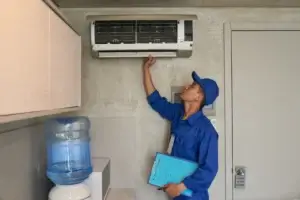
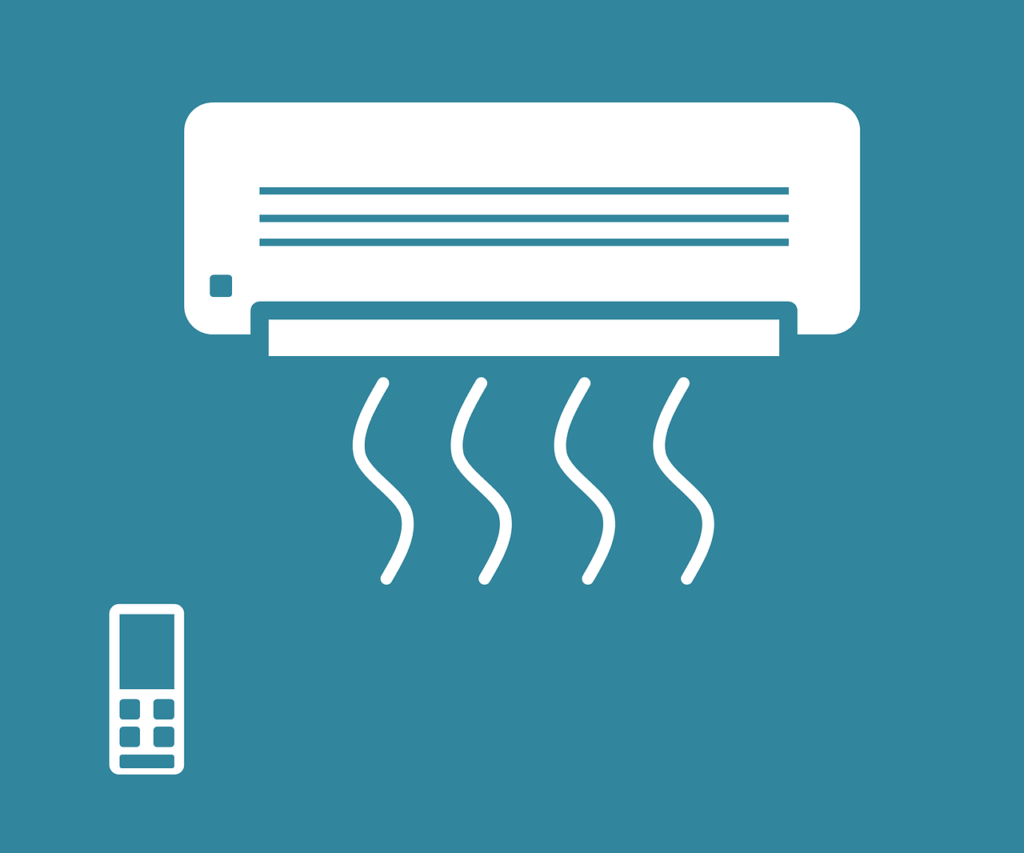
Pingback: Common Problems with Mini Split AC Installation & How to Fix
Pingback: What is an HVAC System & How Does it Work?